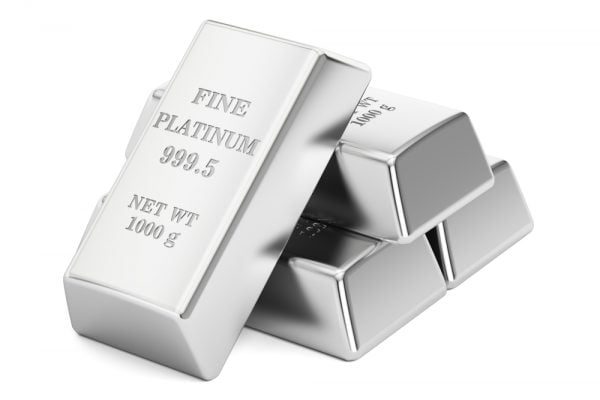As global platinum prices continue to fluctuate, Zimbabwe’s mining industry—historically anchored by its three major platinum producers: Zimplats, Mimosa, and Unki—finds itself at a critical crossroads.
By Rudairo Mapuranga
These mines have been the backbone of Zimbabwe’s $5 billion mining industry, contributing significantly to foreign exchange earnings and economic growth. But with platinum prices significantly lower than their peak and palladium also losing much of its value, there is growing concern over the future sustainability of platinum group metal (PGM) mining in the country. What does the shifting value of platinum mean for Zimbabwe’s mining sector, and how can the industry diversify to remain profitable in the face of these challenges?
The Rise and Fall of Platinum and Palladium
Platinum was once the crown jewel of Zimbabwe’s mining industry. Historically, platinum prices traded around $2,200 per ounce, and its value played a crucial role in supporting the country’s top PGM producers. However, by 2022, platinum prices had plummeted to as low as $700 per ounce. Despite a modest recovery in 2025 to around $960 per ounce, the metal is still far from its historic highs, raising questions about its future role in the global mining landscape.
Palladium, another key metal in the PGM suite, has also seen a dramatic decline. Once trading at around $3,000 per ounce, palladium has now fallen to roughly $900 per ounce. This sharp decrease has added to the pressure on Zimbabwe’s PGM producers, who rely heavily on these metals for their revenues. The combined drop in platinum and palladium prices has created an uncertain environment for miners, many of whom are now forced to explore alternative revenue streams to maintain profitability.
Platinum’s Impact on Zimbabwe’s Big Three Producers
Zimbabwe’s three major platinum producers—Zimplats, Mimosa, and Unki—have been central to the country’s mining industry. At their peak, these mines were responsible for generating around $3 billion in revenue, accounting for more than half of Zimbabwe’s total mining output. However, with the decline in platinum and palladium prices, these companies have had to reassess their operational strategies.
For instance, Zimplats, the country’s largest PGM producer, recently reported a 4% drop in overall production for the first half of 2025, largely due to operational disruptions related to the commissioning of a new smelter. While Zimplats saw a 6% increase in 6E (six elements: platinum, palladium, rhodium, ruthenium, iridium, and gold) output in FY2024, the decline in platinum prices has significantly impacted profitability. According to reports, Zimplats’ profits plunged by 96% in FY2024, driven by lower metal prices and higher tax contributions. Despite this, Zimplats has continued to invest in expansion projects, including a sulphur dioxide (SO2) abatement plant and smelter expansion, demonstrating its commitment to long-term sustainability in Zimbabwe.
Unki Mine, another major player in Zimbabwe’s PGM sector, has also faced challenges. While Unki has managed to maintain its production levels, the company has been forced to rely more heavily on other metals in the PGM mix, such as rhodium, to offset the decline in platinum and palladium prices. Rhodium, in particular, has seen a resurgence in demand, with prices surging to over $16,000 per ounce in 2025, providing a much-needed boost to Zimbabwe’s PGM producers.
Rhodium’s Rise: A Silver Lining for Zimbabwe’s PGM Sector
Rhodium, often overshadowed by platinum and palladium, has become a crucial lifeline for Zimbabwe’s PGM producers. The metal’s price has surged in recent years, driven by increased demand for catalytic converters used in automotive emissions control. In 2025, rhodium prices reached new highs, trading at over $16,000 per ounce, far surpassing both platinum and palladium in value. This price surge has allowed Zimbabwe’s PGM producers to maintain profitability, even as platinum and palladium prices remain depressed.
Zimplats, in particular, has benefited from the rising demand for rhodium. The company’s focus on producing a broader range of 6E metals has helped offset the decline in platinum revenues, allowing Zimplats to continue investing in expansion projects and maintaining its position as a key player in Zimbabwe’s mining industry.
Diversification: The Key to Zimbabwe’s Mining Future
While platinum and palladium may no longer dominate Zimbabwe’s mining landscape, the country is far from running out of options. In fact, the decline of platinum could be a catalyst for the diversification of Zimbabwe’s mining sector, with gold and lithium emerging as potential growth drivers.
Gold, long overshadowed by platinum, is now experiencing a resurgence. With gold prices reaching record highs in 2025, Zimbabwe’s gold sector is poised for significant growth. New projects, such as the Motapa and Bilboes mines, are set to become major contributors to the country’s gold output. Motapa, in particular, is expected to triple the production of Blanket Mine, which currently produces an average of 180 kilograms per month. This means Motapa could produce over half a tonne of gold each month, positioning it as one of the country’s largest gold mines.
The rise of lithium is also a game-changer for Zimbabwe’s mining industry. As global demand for electric vehicles (EVs) and renewable energy storage continues to grow, lithium has become one of the most sought-after minerals in the world. Zimbabwe’s vast lithium reserves have attracted significant foreign investment, with companies eager to capitalize on the country’s potential as a major lithium producer. In 2025, Zimbabwe’s lithium sector is expected to play a key role in the country’s mining future, providing a much-needed source of revenue as the PGM sector faces ongoing challenges.
Exploration: The Lifeblood of Zimbabwe’s Mining Sector
To fully realize the potential of its gold and lithium reserves, Zimbabwe must continue to prioritize exploration. Mineral exploration is essential for unlocking new deposits and attracting foreign investment, both of which are critical for the long-term sustainability of the country’s mining sector.
Recent exploration efforts have already yielded promising results. Kavango Resources, for example, has confirmed the existence of a gold-mineralized system at its Nara project in Matabeleland, highlighting the potential for further gold discoveries in Zimbabwe. Similarly, exploration at other sites has revealed significant lithium deposits, further cementing Zimbabwe’s position as a key player in the global lithium market.
However, more investment in exploration is needed to ensure that Zimbabwe’s mining sector remains competitive. Without continued exploration, the country risks missing out on untapped mineral wealth that could provide a crucial boost to its economy. By investing in exploration, Zimbabwe can unlock new opportunities and secure its position as a leading mining destination.
The Role of Infrastructure and Policy in Supporting Growth
While the future of Zimbabwe’s mining sector looks promising, there are still challenges that need to be addressed. One of the most pressing issues is the country’s infrastructure. Poor road networks, unreliable power supply, and outdated mining equipment have all contributed to operational inefficiencies and increased costs for mining companies.
To overcome these challenges, Zimbabwe must invest in upgrading its infrastructure. This includes improving road networks to facilitate the transportation of minerals, expanding power generation capacity to ensure a reliable energy supply, and modernizing mining equipment to increase efficiency. By addressing these issues, Zimbabwe can create a more conducive environment for mining companies to operate and attract further investment.
In addition to infrastructure, the government’s policies will play a crucial role in supporting the growth of the mining sector. Zimbabwe has already made strides in creating a more investor-friendly environment, with policies aimed at encouraging foreign direct investment and promoting sustainable mining practices. However, more work needs to be done to ensure that these policies are implemented effectively and that mining companies are given the support they need to thrive.
Conclusion
While platinum’s dominance may be fading, Zimbabwe’s mining industry is far from finished. The rise of gold, lithium, and rhodium offers new opportunities for growth, and with the right investments in exploration, infrastructure, and policy, Zimbabwe can ensure that its mining sector remains a key driver of economic growth for years to come.
The country’s three major PGM producers—Zimplats, Mimosa, and Unki—have already demonstrated their ability to adapt to changing market conditions, focusing on a broader range of metals to maintain profitability. Meanwhile, new projects like Motapa and Bilboes signal the emergence of a vibrant gold sector, while lithium’s importance in the global energy transition provides a clear path forward for Zimbabwe’s mining future.
With continued investment and strategic planning, Zimbabwe can navigate the challenges posed by platinum’s decline and emerge stronger than ever. The country’s rich mineral resources, combined with a commitment to exploration and innovation, ensure that Zimbabwe’s mining industry will continue to play a vital role in the global economy.
.png)




